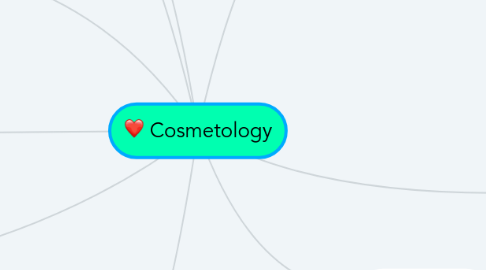
1. There is an increasing use of laser for facial cosmetic surgery, and minimally invasive techniques for face,hair, and body contouring. These non-invasive procedures not only give quicker results but they are also less expensive than surgical procedures.
1.1. Massage chairs ,LED light therapy devices for wrinkles, handled skin de-clogger are some of the gadgets associated with spas, redefining the skincare routine, to deliver an instant beauty boost.
2. Cosmetologists learn their skills to six to 12 month training programs offered by many public and private vocational and cosmetology schools.
2.1. After Graduating from Cosmetology school, Cosmetologists take licensing examinations that include written tests, and sometimes practical and oral exams.
3. According to the U.S Department of Labor, all states require barbers, hairdressers and cosmetologists to be licensed.
3.1. They must cover many topics, including health, sanitation and infection control; use of products and tools; techniques or hairstyling; techniques of skincare treatment; application of cosmetics; techniques of nail services; and communications and human relations.
4. Economic
4.1. The cosmetic industry is undoubtedly a force to be reckoned with: steadily rising from a revenue of $41.56 billion in 2004, to projections as high as $60.58 billion in 2015.
4.2. In 2016, the U.S was considered the most valuable beauty and personal care market in the world, generating approximately 84 billion U.S dollars in revenue that year.
4.3. In 2015, Ulta generated approximately 3.72 billion U.S dollar in retail sales.
4.3.1. In 2015, Sephora's sales per store reached a total of 5.1 million U.S dollars compared to approxiamtely 4.3 million dollars per Ulta Store.
5. Education
5.1. To obtain a license, applicants usually must pass a written text as well as demonstrate the ability to preform basic cosmetology services.
6. Technology
6.1. Technology has helped both the small and large companies to combine a wide and relevant information about their customers which is very essential in cosmetic industry.
6.1.1. Technology has also made it possible for sheets to be infused with ingredients that help make your skin more smooth and glowing.
7. Ethics
7.1. The Cosmetology career has good and poor ethics
7.1.1. Good Ethics
7.1.1.1. Self- Motivation
7.1.1.1.1. Positive Attitude-
7.1.2. Bad Ethics
7.1.2.1. Lack of Creativity
7.1.2.1.1. Laziness
8. History
8.1. In the late 19th and early 20th century, the beauty industry became an important and viable career path for women, especially African-American women, who created products designed specifically for different ly textured hair.
8.1.1. During the "roaring 20's the beauty industry took off in leaps and bounds.
8.1.2. In New York, Elizabeth Arden opened her signature salon and began offering "make overs" for her clients.
8.1.2.1. During the war, the beauty industry took a practical turn, with focus and emphasis on creating sunscreen for soldiers. The basics of sun protection can now be found in a number of different beauty products and is a cornerstone for most facial cosmetics.
8.1.2.1.1. In the 1960's women went "mad" for mod, mirroring the wide eyed, matte look of supermodel Twiggy, while the 1970's brought a more natural look to women's beauty choices.
9. Demographics
9.1. The average salary of a hairstylist is $22,782
9.1.1. Employment of barbers, hairstylists, and cosmetologists is projected to grow 13 percent from 2016 to 2026, faster than the average for all occupations.
9.1.1.1. The median hourly wage for barbers was $12.38 in May 2016.
9.1.1.1.1. The Job outlook is 13% (Faster than average)
